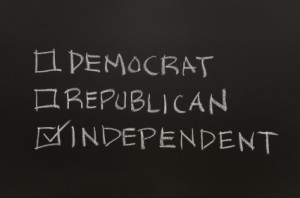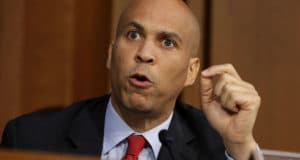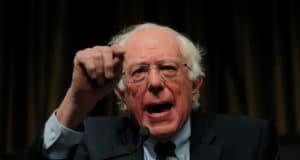 Whether due to disenchantment with politics in general or the American bent toward individualism, more voters that ever consider themselves to be Independents than ever before. With that uptick in non-declared voters, the call for a viable third political party is bound to rise as well.
Whether due to disenchantment with politics in general or the American bent toward individualism, more voters that ever consider themselves to be Independents than ever before. With that uptick in non-declared voters, the call for a viable third political party is bound to rise as well.
Gallup recently reported that 40 percent of Americans considered themselves to be political independents in 2011. Compared to 31 percent who called themselves Democrats and 27 percent who said they are Republicans, that makes Independents appear to be the largest voting bloc in America. To discern the real possibility of a viable third party, one needs to consider the role they have played in the past in American politics.
Third Parties That Made a National Impact
The following are third parties that made any significant impact on the Presidential elections in the United States. Listed are the candidate, party, and percentage of votes garnered by each.
- 1856: Millard Fillmore (Whig-American) – 21.5 percent
- 1860: John C. Breckinridge (Southern Democrat) – 18.1 percent
- 1860: John Bell (Constitutional Union) – 12.6 percent
- 1912: Teddy Roosevelt (Progressive) – 27.5 percent
- 1924: Robert M. LaFollette (Progressive) – 16.6 percent
- 1968: George Wallace (American Independent) – 13.5 percent
- 1992: H. Ross Perot (Reform) – 18.9 percent
One should note that the first three third parties mentioned all arose just prior to the Civil War and the eventual election of Abraham Lincoln. All three parties were dissolved and reflect the deep divisions in the country during this period.
With the exception of Teddy Roosevelt in 1912, no third party has managed to remain intact and produce a candidate able to eventually win the presidency.
Ross Perot’s showing in 1992 was the best finish by a non-major party candidate in a presidential election since Teddy Roosevelt won 27.5 percent of the vote in 1912. But, unlike Roosevelt’s Progressive Party, Perot’s Reform Party failed to emerge as a unified, viable contender. Each successive election after Perot’s loss in 1992 showed the Reform Party gradually fading away.
Why Third Parties Gain Acceptance
Gallup reports that the number describing themselves as Independent always goes up in the year before a general election, but then tends to go down again as the vote gets closer. This reflects the fact that special interests or single focus groups tend to garner a good deal of interest during the mid-first term or second term of a president. Interest remains high early in primaries but then begins to diminish as the reality of voting in the general election draws near.
Another phenomenon is the fact third parties tend to draw much higher numbers in polling than in actual voting. Many seem to change their minds about voting for a candidate they doubt will win once the curtain is drawn.
The Place of Third Parties
In American history, third parties have served the vital purpose of refocusing the two major political parties on issues they have overlooked or dealt with ineffectively. Rarely, however, does a third party manage to knock an existing one from its place.
Third parties have served an important place, however, in effecting the platforms of both Republicans and Democrats. Often times, a major third party candidate has returned to their original party with more influence than if they had not run. Others, however, have been marginalized. For now at least, running as a third party candidate in a national election is politically risky.
Perhaps America is ready for a viable alternative to the status quo. However, history says the more likely outcome will be a continued commitment by the American people to a formula that has protected this country from the divisions seen in a number of multi-party countries.
©2012 Off the Grid News
 Off The Grid News Better Ideas For Off The Grid Living
Off The Grid News Better Ideas For Off The Grid Living



